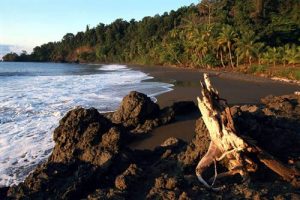
Costa Rica, it is known for its beautiful natural scenery, its biodiversity and its wonderful habitants happy. Here are 14 interesting facts about Costa Rica to help make the country a truly unique place.
- More than one-quarter of the land is dedicated to conservation.
Tourists and locals alike feel attracted by the natural beauty of Costa Rica and undertake to preserve it. With 20 national parks, 8 biological reserves, refuges of animals, and protected areas, 26 percent of the lands of Costa Rica is protected.
2. Tourism is the leading source of foreign exchange for the country.

All the natural beauty and diverse landscape with two oceans and access to a number of adventure activities have made Costa Rica a great holiday destination. In 1995, tourism overtook bananas to become the leading source of foreign exchange for the country. Tourism reached an all-time high for Costa Rica in 2013 with 2.4 million visitors.
The United Nations Education, Scientific, and Cultural Organization (UNESCO) have designated four places in Costa Rica as world heritage cultural and natural value. These are the National Park La Amistad, the National Park Cocos, the Guanacaste Conservation Area, and pre-Columbian settlements chiefdom with the stone of the Diquis spheres.

Costa Rica dissolved its national army in 1948, and the abolition of the military was written into the Constitution in 1949, committing to provide support military to Costa Rica (and any other signatory) where you need it. In 1980, the United Nations University for peace was created and hosted in Costa Rica.

Costa Rica may not be a big country, but it stores a lot of life on its borders. While Costa Rica occupies only 0.03 percent of the world’s surface, it has the highest biodiversity density on the planet. The country is home to more than 500.000 species. And, with nearly 3 percent of the world’s biodiversity contained within its borders, Corcovado National Park has been considered “the most biologically intense place on the planet.”
7. There are many butterflies in Costa Rica.

The 338 known species of hummingbirds, about 50 live in Costa Rica. The smallest hummingbird in Costa Rica (the Hummingbird scintillant masculine) weighs only two grams. The largest (violet brewing) weighs an average of 11.5 grams.
9. Residents in Costa Rica are called Ticos and Ticas.

Costa Ricans often greet each other and say goodbye by saying “Pura Vida”. But pure life, is more than a way of talking about Costa Ricans, is a state of mind. Costa Ricans take every opportunity to live life to the fullest.
